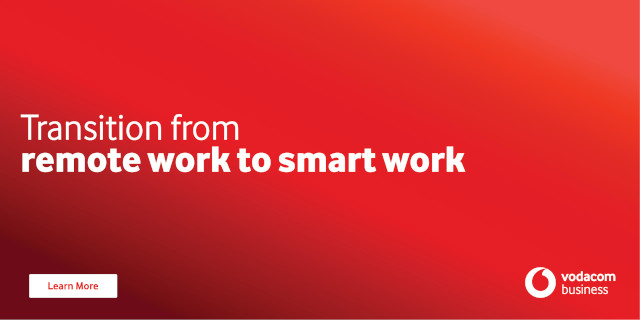A call to rethink data protection in today's threat landscape
By Industry Contributor 28 March 2024 | Categories: news.jpg)
News sponsored by Vodacom Transformation of Work:
By Modeen Malik, Principal Systems Engineer at Commvault
Today’s cyber threat landscape is constantly evolving, posing significant data challenges, and placing organisations under immense pressure to safeguard their business, whether from internal or external attacks.
As these risks continue to mount, modern-day organisations need trusted technologies and partners with proven solutions to rely on to protect their data from new and emerging threats in a landscape that is increasingly threatened by ransomware attacks.
It is therefore imperative for IT and security professionals to shield and secure their backup infrastructure from malicious attacks, with data protection coverage that layers across data centres, the cloud and beyond.
Considering the rapid rate at which cyber threats are evolving, it has become the focal point in most organisations’ IT landscapes, underscoring the need to adopt future-proof, next-generation data protection technologies with security capabilities that include features such as cyber resilience and data security.
Unfortunately, data protection is still commonly miscategorised by many as a process of nightly backups, but this is flawed thinking that puts data protection in a box. While routine backups will always be a requirement – it is just one ingredient.
It is paramount that organisations recognise the irreplaceable broader role of cyber resilience, which is a critical part of the modern cybersecurity strategy. Whether it is monitoring threats, controlling data access or rapidly recovering data, cyber resilience is pivotal to containing breaches, limiting the exposure window and enabling business continuity.
Proactive cyber defence
Cyber resilience goes beyond the ability to recover from an attack, which is reactive by nature. Companies must start looking at including proactive approaches in their cyber defences that will actively defend against attacks and limit or even prevent damage or loss of critical data. Active defence requires the inclusion of cyber defences at every layer of the data management stack – infrastructure, authentication, data access, role-based access controls, applications, network, storage and data protection systems.
Active defence means adopting technologies that help organisations better manage their data protection and recovery operations and leverage the new tools to assess their risks. This will enable them to not only classify sensitive data for appropriate security measures but to also detect threats earlier in both their production and backup storage environments.
Modern data protection platforms are designed to provide layered protection across cloud, on-premises and Software-as-a-Service (SaaS) workloads, as most organisations have hybrid IT ecosystems. Effective data protection is provided through three pillars - secure, defend and recover – and offers customers true cloud cyber resilience in the ever-changing digital landscape.
This cyber resilience can be further bolstered by incorporating Artificial Intelligence (AI) and Machine Learning (ML) capabilities, which empower organisations to take proactive steps based on early warning of attacks. Early warning systems provide the ability to detect threats before they impact an organisation’s data. This is done with smart decoys and threat sensors that mimic real workloads, assets and backup environments to keep attackers away from valuable data by redirecting them to compromise false resources.
Detailed analysis
Other key aspects of early warning are accurate alerting, triggered when attacks or anomalies are detected in the environment, and threat insights that can provide a detailed analysis of anomalous activities, behaviours and data events. These elements need to seamlessly integrate with an organisation’s security stacks and can be automated through AI to detect risk and malicious activities.
These powerful, enterprise-grade data protection systems not only provide air gap protection against cyberattacks and early warning ransomware detection with cyber deception. Additionally, they support business continuity and disaster recovery (BCDR) plans, which enable organisations to respond to disruptions faster and to minimise the effects of cyberattacks.
While data is a company’s crown jewel, it is also the main target of cyberattacks. However, as risks evolve and IT resources shrink to budget constraints, companies are increasingly being challenged to protect their critical business data. To effectively safeguard data from new and emerging threats, data protection must be reimagined, and companies need to adopt solutions that go beyond traditional backup and recovery.
Most Read Articles

Have Your Say
What new tech or developments are you most anticipating this year?




